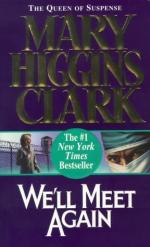|
This section contains 348 words (approx. 2 pages at 300 words per page) |

|
The doctors in early detective fiction were positive figures, men of science and reason who could be relied on for informed analyses of physical properties or applications of logic. Such men were respected associates of detectives, like Dr. Watson in Sir Ar thur Conan Doyle's nineteenth-century Sherlock Holmes stories, or were themselves medical sleuths, like Jacques Futrelle's S. F. X. "The Thinking Machine" Van Dusen (1905-8), R. Austin Freeman's Dr. John Evelyn Thorndyke (1907), or Lawrence G. Blochman's Dr. Daniel Webster Coffee (1952).
Nurses like Mignon G. Eberhardt's Sarah Keate (1930s) and Anne Perry's nineteenthcentury associate of Florence Nightingale, Hester Latterly (1980s to present), eventually became a part of this tradition, and in the 1990s and 2000s women like Patricia Cornwell's Dr. Kay Scarpetta, the chief medical examiner for the Commonwealth of Virginia, have joined this illustrious group and novelists have focused more and more on the intellectual...
|
This section contains 348 words (approx. 2 pages at 300 words per page) |

|




